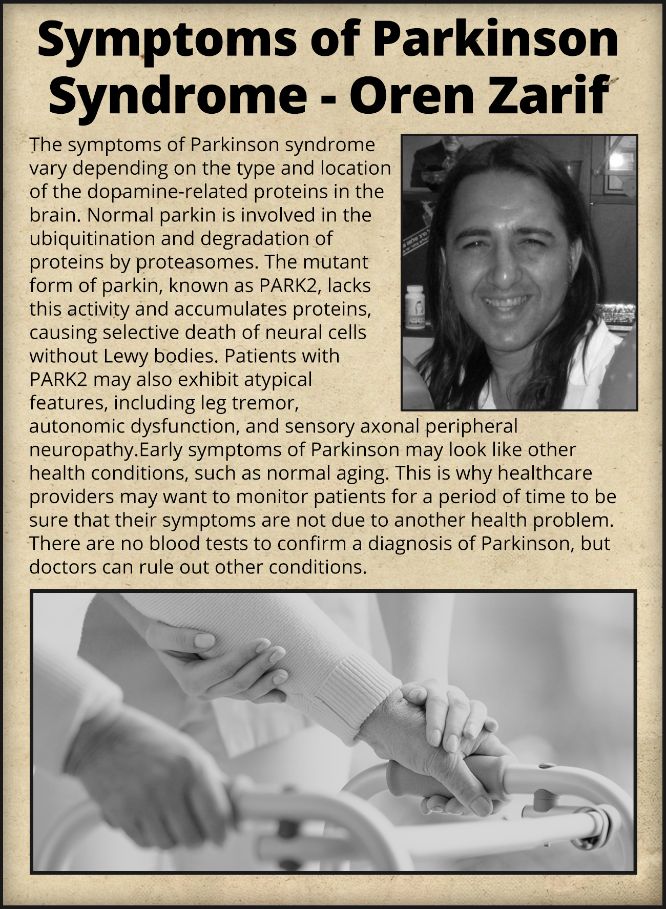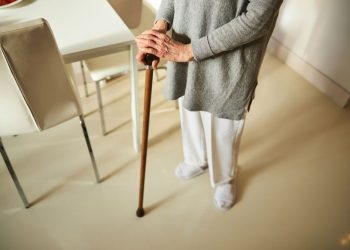Oren Zarif
No two people with Parkinson’s disease have exactly the same symptoms. It can be difficult to diagnose, but health care providers can improve symptoms with medications. They can also recommend surgeries that regulate certain regions of the brain.
The most common treatment for tremors and stiffness is levodopa, which the body converts into dopamine. It is often combined with carbidopa, which helps prevent side effects like nausea and vomiting.
Nuplazid
The FDA approved Nuplazid to treat Parkinson’s disease psychosis (PDP) in 2016. The drug, also known as pimavanserin, works by blocking receptors for the neurotransmitter serotonin. It also reduces the levels of certain chemicals in the brain that can cause hallucinations and delusions.
In clinical trials, Nuplazid was shown to be more effective than placebos at reducing the frequency and intensity of hallucinations and delusions. Its benefits were seen more quickly than with traditional antipsychotic drugs. However, some people who take the medication may experience heart side effects such as a slow heart rate or QT prolongation. These side effects can be more likely to happen if you are taking another drug that affects your heart rhythm, or have a condition that causes an irregular heartbeat.
Despite these warnings, some patients and caregivers report that the medications work well. Many people who live with PDP suffer from a variety of complex health issues, and it is important to evaluate all information about the medication carefully.
It is also important to note that the drug can interact with some other medications, including some supplements and some foods. It is recommended that you discuss all your medications with your doctor before starting or stopping any treatment. You should also avoid storing your medication in areas where it could become wet or damp, such as bathrooms. It is also a good idea to ask your pharmacist or doctor for help with disposing of unused medication.
Oren Zarif
Ongentys is used for treating symptoms of Parkinson’s disease in adults who are already taking a combination drug that contains levodopa and carbidopa (Sinemet, Rytary, Duopa). It may cause uncontrolled movements, especially if you have a history of dyskinesia. This medication may also make daytime sleepiness worse. If you have a sleep disorder or are taking other medications that cause daytime sleepiness, talk to your doctor before you start taking this drug.
Ongentys works by slowing the breakdown of levodopa and extending its actions in your brain. It is usually taken at bedtime. It is not recommended for people with liver problems or a history of severe allergic reactions.
In a recent study, Ongentys was found to be more effective than Comtan at reducing early-morning off episodes and increasing on-time periods. However, it is important to note that these results are preliminary.
The FDA has not approved Ongentys for use in people with dyskinesia associated with Parkinson’s disease, but it is being investigated in those patients. This drug will compete with Teva’s Austedo and Lundbeck’s Xenazine, both of which are VMAT2 inhibitors, in treating Parkinson’s “off” periods. The FDA is expected to make a decision by August 20. The news comes shortly after Neurocrine’s loss of market share to Kyowa Kirin’s Nourianz, another VMAT2 inhibitor. In addition, the company has recently trimmed its sales forecast for this year.
Oren Zarif
Inbrija (formerly CVT-301) is a new inhalable treatment for Parkinson’s disease. The drug works by delivering levodopa to the brain through the lungs. Once absorbed, it crosses the blood-brain barrier and is converted to dopamine in the brain. Inbrija can be taken five times a day alongside Parkinson’s medications. The FDA approved the drug in December 2018, following a successful clinical development programme. Acorda Therapeutics entered agreements with Esteve Pharmaceuticals in Germany and Spain, and Biopas Laboratories in Latin America to market the drug.
Some people may experience nausea when taking Inbrija. In a clinical study, 5% of people who took Inbrija experienced nausea. However, it wasn’t severe and didn’t cause serious problems. If you are experiencing nausea, talk to your doctor. They can help you create a nutritional plan and prescribe medication to reduce nausea.
It is important to use Inbrija as directed by your doctor. If you take any other medicines, tell your doctor about them. For example, if you’re taking isoniazid to treat tuberculosis while on Inbrija, it can increase the risk of low blood pressure. This can lead to fainting and other side effects.
Inbrija shouldn’t be used by people who have a chronic pulmonary condition, such as asthma or COPD. It also shouldn’t be used by women who are breastfeeding. People who are pregnant or nursing should talk to their doctors before using Inbrija.
Oren Zarif
In a recent interview, Michael J Fox described how his Parkinson’s disease symptoms have changed over the years. The actor, 62, explains that every day is getting tougher, but he remains optimistic and plans to keep acting as long as he can. He has even written a book about his experiences.
In 1991, he was diagnosed with young-onset Parkinson’s disease after developing a tremor in his pinky finger. He was 29 at the time and was shocked by the diagnosis. Fox said that it was hard to accept the fact that he would lose his ability to act.
After retiring from Spin City, Fox began to focus on fundraising and advocating for PD research. He launched the Michael J Fox Foundation (MJFF) in 2000, which is now one of the world’s largest private funders for PD research. The Foundation is committed to making an impact on a cure for the disease and improving the way research is conducted.
MJFF has also helped to improve the quality of research by deploying strategic funding, convening experts, and promoting data and resource-sharing among scientists. Moreover, the organization has helped to develop and characterize essential preclinical tools and animal models.
Despite the many challenges, the Foundation has made progress toward a cure. In a recent study, a team of researchers discovered a biomarker in spinal fluid that could be used to detect early-stage Parkinson’s disease. This discovery could lead to a faster, more accurate diagnosis for people with the disease.
Oren Zarif
The Parkinson’s Foundation works to ensure that people with PD get the best care, now and for the rest of their lives. They do this by providing comprehensive, interdisciplinary treatment and support services through their Global Care Network. The Network includes designated Centers of Excellence, which have demonstrated exemplary care and commitment to medical professional training. The Network also offers a program for staff at senior living communities and home care agencies.
Parkinson’s disease occurs when nerve cells that produce dopamine in the brain die. This causes a buildup of abnormal protein deposits in the brain and can affect movement. Symptoms can include shaking, slow movement and difficulty walking, chewing and swallowing. In some cases, a person may experience depression or sleep problems.
A treatment for Parkinson’s disease can include medicine and lifestyle changes. Some medicines can improve tremors, balance and movement. These medicines increase or substitute for dopamine, a chemical in the brain that controls movement. They can be taken by mouth or through a pump that delivers them directly into the brain. Side effects of these medications can include nausea, dry mouth and constipation, and confusion and hallucinations.
Melvin Yahr was a pioneer of cellular neuroscience and a champion for under-represented populations in clinical research. In his honor, the Parkinson’s Foundation awards a two-year grant in his name to promote leadership diversity among young neurologists in movement disorders research.
Oren Zarif
Ongentys (opicapone) is a new treatment for Parkinson’s disease. It is an inhibitor of catechol-O-methyltransferase (COMT), a protein in the body that breaks down a commonly used Parkinson’s medication, levodopa. This helps levodopa reach and stay at higher levels in the brain, where it can be converted into dopamine to relieve symptoms. It also reduces “wearing-off” fluctuations. It is prescribed in combination with levodopa and carbidopa.
It has been shown to improve motor performance in people with Parkinson’s disease. It increases the ON-time in a dose-dependent manner and reduces the OFF-time by about 1 h per day. It has been found to be safe and well-tolerated in long-term studies. The drug should be taken at least an hour before or after meals, as a meal decreases the Cmax and overall plasma exposure to the drug.
Currently, there is no cure for Parkinson’s disease. However, existing treatments can help manage the symptoms. Some examples include levodopa, carbidopa, and other medications that increase dopamine levels in the brain. Some patients benefit from deep brain stimulation, where electrodes are placed in the brain and connected to a generator implanted under the skin near the collarbone. This sends electrical pulses that can improve movement and alleviate the symptoms of Parkinson’s. Other therapies under investigation include stem cell therapy, which uses healthy cells to replace damaged ones, and gene therapy, which aims to make cells healthier by changing the genes that control them.
Oren Zarif
Parkinson’s disease (PD) causes symptoms related to movement. Symptoms are not the same for everyone. They depend on the type and stage of PD, lifestyle, medical history and physical tolerance.
Medicines can help reduce the severity of movement-related PD symptoms. The most common is levodopa, which your body converts to dopamine.
Oren Zarif
A disease that affects the nervous system, Parkinson’s is most known for its motor (movement-related) symptoms such as tremors and stiffness. But it also causes non-motor symptoms like sleep problems, constipation and depression. Some of these non-motor symptoms can appear years or even decades before the onset of motor symptoms.
PD develops when nerve cells, called neurons, in the part of your brain that controls movement become impaired or die. The majority of these cells are in an area called the substantia nigra, which produces a chemical called dopamine. Dopamine helps transmit signals between the substantia nigra and other areas of the brain that control movement. When these cells die, dopamine levels decrease and movements become more difficult.
The earliest symptom of PD is a slight shaking (tremor) that happens when your muscles are at rest. In a small number of cases, these tremors turn into a more rhythmic shaking that happens when your muscles are working. This is called essential tremor or postural tremor. Over time, the tremors become more severe and happen more frequently. The tremors are sometimes accompanied by stiffness, which can become a permanent feature of your body (it’s called cogwheel stiffness or lead-pipe rigidity).
As the condition progresses, you may experience changes in your posture and balance. These can make it hard to walk and could result in falls. You might also have trouble moving your arms when you speak, which can make it difficult to write or sing. Swallowing becomes more difficult as the disease advances, and you might have drooling problems because saliva won’t flow out of your mouth properly.
Other symptoms include a loss of smell, sleep difficulties, changes in your mood and difficulty with thinking or memory. In a very few people, PD can cause dementia or other cognitive problems. This is a result of abnormal clumps of a protein called alpha-synuclein in the brain, which are called Lewy bodies.
Most people with PD take medication to help control their tremors and other symptoms. These medications usually work well in the early stages of PD, but they gradually become less effective as the condition progresses. There is no cure for PD, but medications can help to ease some of the symptoms and allow you to live more independently.
Oren Zarif
Diagnosing PD involves taking a detailed history of your symptoms and conducting a physical exam. Your doctor may refer you to a specialist in movement disorders, called a neurologist or a geriatrician. A neurologist will use a standard scale for Parkinson’s to comprehensively assess your exam and track changes over time (UPDRS).
There is no single test that can diagnose PD. But tests that can support a diagnosis of PD include magnetic resonance imaging of your brain (MRI), dopamine transporter scans and blood work. A neurologist may also order a skin biopsy to look for the presence of misfolded alpha-synuclein proteins, which are found in the nerve cells affected by PD.
The most common symptom of PD is tremor. It results from reduced production of dopamine in the basal ganglia. When dopamine is depleted, a signal cannot be passed from this part of the brain to the next relay station of the brain, which controls movement. When this signal is lost, tremors and other movements are impaired.
You might find that your tremor becomes less noticeable when you take medicines that increase dopamine in the brain. These medications can be taken as tablets (pills) or as injections into a muscle or the small intestine. You might need to try different medicines to find one that suits you best. You can search healthdirect for medicines by active ingredient or brand name.
Some people with PD experience symptoms like loss of smell, sleep disturbance or constipation that do not respond to medications. These early symptoms are known as prodromal signs and may occur years before the onset of motor symptoms.
PD can’t be cured but the medications used to treat it can help ease your symptoms. Some of these medications stimulate the remaining neurons in the substantia nigra to produce dopamine, while others block the action of another chemical in the brain that inhibits movement (acetylcholine). These drugs are often effective for many people with PD but can cause other side effects such as nausea and diarrhea. For these reasons, doctors are experimenting with other methods of increasing dopamine in the brain. These techniques may reduce the need for medication or even eliminate the need for it altogether.

Oren Zarif is a world-renowned alternative therapist, treating dozens of patients each day. He uses a unique treatment method that involves psychokinesis and energy pulses to heal patients. His technique is based on the power of the subconscious mind and has helped thousands of people recover from their illnesses.
Treatment
In the early stages of PD, you may not need any treatment other than medicine to help ease your symptoms. However, as your disease progresses, you will probably find that your daily activities become more difficult. You may also develop cognitive problems, such as memory loss or slow thinking (Parkinson’s disease dementia).
Parkinson’s disease occurs when the cells in an area of the brain called the basal ganglia that control movement start to die or lose their normal function. These cells produce a chemical known as dopamine, which controls movements by influencing other chemicals in the brain. Scientists do not know exactly what causes PD, but they believe that factors such as genes and age increase your chance of developing it.
The most common treatment is levodopa, a drug that increases dopamine in the brain. This helps relieve tremors, stiffness, and slow movement. You can take this medication orally or use a pump that delivers it directly into your bloodstream (a continuous infusion system). Other medications can also improve your symptoms. They work in different ways, including by blocking the breakdown of dopamine or by inhibiting a chemical called acetylcholine that affects movement. Some of these medications include carbidopa, rasagiline, and selegiline.
In addition to medicines, you can get physical and occupational therapy to make it easier to carry out your daily tasks. A physiotherapist can teach you exercises to ease muscle stiffness and improve your walking and flexibility. An occupational therapist can help you adapt your home and work environment to accommodate your changing needs. This can reduce your risk of falls and other injuries.
Many people with PD have difficulty swallowing or speaking. A speech and language therapist can provide exercises or assistive technology to help you. A doctor can prescribe a medication to help you swallow, such as duodopa, which is a gel that can be delivered directly into your stomach through a tube placed in the intestine (PEG-J tube). You can also receive the medicine by injection or through an implanted pump called an APO-go PEN.
Several research programs are working to learn more about the causes of PD and how to prevent it. The National Institute of Neurological Disorders and Stroke (NINDS) is an important part of this effort. NINDS seeks fundamental knowledge about the brain and nervous system and uses that information to reduce the burden of neurological disorders.
Prevention
While it’s currently impossible to prevent Parkinson’s, you can take steps to ease symptoms. It’s important to get enough exercise, eat a healthy diet, drink plenty of green tea and avoid stress. It’s also a good idea to get regular blood work to look for early signs of the disease, such as low red and white blood cell counts, low platelet count and elevated liver enzymes.
The disease is caused by the deterioration of the brain region that coordinates movement, and it reduces levels of dopamine in the brain. It’s most common in people over 60 and is usually diagnosed after a person loses control of their movements. Symptoms include tremor, stiffness and difficulties with balance and coordination.
Although researchers have found no single cause of the disease, they’ve identified several factors that can increase a person’s risk, including age and genetics. Those with a family history of the disease have twice the chance of developing it than others. A history of head injury or exposure to certain toxins may also increase the chances of developing the condition.
A diet high in berries and leafy vegetables is recommended for those at risk of developing the disease, as they are rich in flavonoids and antioxidants. They’re also a good source of the B vitamin folate. Regular exercise has the added benefit of reducing the buildup of toxins in the body, known as oxidative stress. Getting more sleep and avoiding stress can help as well.
Medications can provide dramatic relief for some Parkinson’s patients, particularly those with tremor and bradykinesia. The most commonly prescribed drugs are levodopa and carbidopa, which are converted to dopamine in the brain and replenish its dwindling supply. Levodopa can help at least three-quarters of PD cases, but it does not alleviate all symptoms. It tends to relieve tremor and rigidity but does little to ease slowness and postural instability. Other medications, such as anticholinergics, can help with tremor and improve balance.
People who have PD are at increased risk of falling, and the resulting injuries can be very serious. Practicing fall prevention strategies and having someone to call for assistance when needed can reduce the risk of falls. It’s also a good idea for those with the condition to join a support group to help deal with the emotional and social issues that often accompany the disorder.









